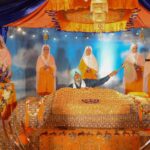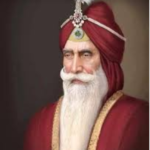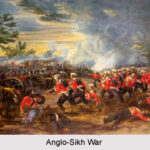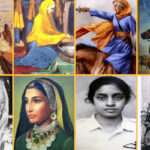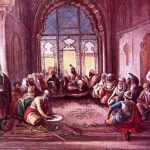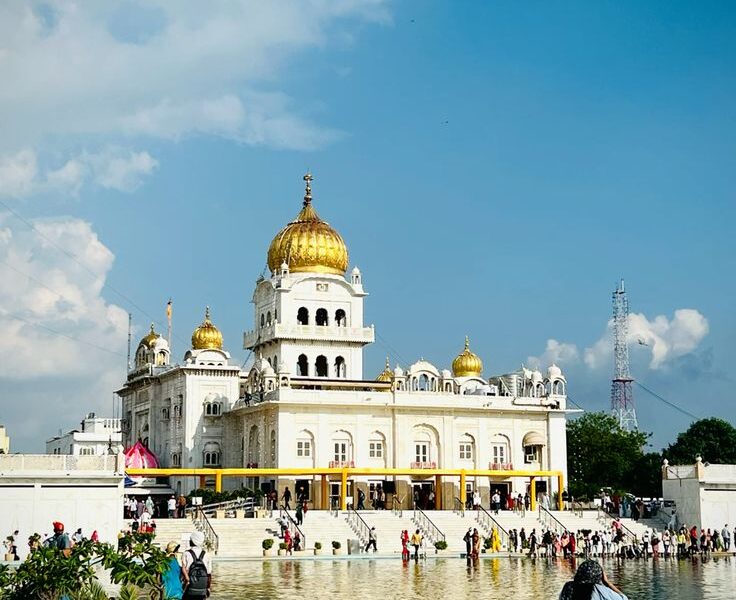Table of Contents
ToggleThe Five Khalsa
As per to tradition, Gobind Singh has demonstrated Guru of the Sikhs upon the death of his father, Guru Tegh Bahadur, who disapproved to converted to Islam. At this timeline in history, Sikhs seeking escape from oppression by Muslims often return back to Hindu practice. To preserve the tradition, Guru Gobind Singh at a meeting of the community asked for five men keen to surrender their life journey for him and the cause. With great unwillingness by nearly everyone, eventually, five volunteers stepped forward and were started off into the khalsa—the Sikh warriors’ special group.
The Sikh History and Panj Pyare
The original five beloved Panj Pyare played a key role in the shape up of Sikh history and in defining Sikhism. These spiritual warriors vowed not only to fight adversaries on the battlefield but to combat the inner egoism, and enemy, with humility through service to efforts and humanity to get rid of caste. They performed the earliest Amrit Sanchar (Sikh initiation ceremony), and baptize Guru Gobind Singh and about 80,000 others on the fest of Vaisakhi in 1699.
Each of the five Panj Pyare is respected and carefully studied to this day. All five Panj Pyare fought beside the Khalsa and Guru Gobind Singh in the siege of Anand Purin and in December 1705, supported the guru to escape from the battle of Chamkaur.
Bhai Daya Singh (1661 – 1708 CE)
The foremost of the Panj Pyare to answer the call of Guru Gobind Singh and served his head was Bhai Daya Singh.
• in 1661 in Lahore Born as Daya Rum (present-day Pakistan)
• Family: Son of Suddha and his wife Mai Dayali of the Sobhi Khatri family
• Occupation: Shopkeeper
• Initiation: at age 38, at Anand Purin 1699
• Death: at martyred age 47, Nanded in 1708
Upon initiation, Daya Ram gave up the job and association of his Khatri caste to become Daya Singh and joining the Khalsa warriors. The meaning of the term Daya is compassionate, merciful, and kind, and Singh denotes “lion”—qualities that are innate in the five beloved Panj Pyare, all of whom part this name.
Bhai Dharam Singh (1699 – 1708 CE)
The second of the Panj Pyare to answering the call of Gobind Singh was Bhai Dharam Singh.
• Born as Dharam Dasin in 1666 by River Ganges in Hastinapur, (at present-day Delhi) northeast of Meerut
• Family: Son of Sant Ram and his wife Mai Sabho, of the Jatt family
• Occupation: Farmer
• Initiation: at age 33, at Anand Purin in 1699
• Death: martyred age 42, At Nanded in 1708;
Upon initiation, Dharam Ram permits up the occupation and association of his Jatt caste to become Dharam Singh and joining the Khalsa warriors. The definition of Dharam is righteous living.
Bhai Himmat Singh (1661 – 1705 CE)
The third of the Panj Pyare to answering the call of Guru Gobind Singh was Bhai Himmat Singh.
• In January 18, 1661, Born as Himmat Rai at Jagannath Puri (at present-day Orissa)
• Family: Son of Gulzaree and his wife Dhanoo of the Jheeaur family
• Occupation: Water carrier
• Initiation: Anand Pur, 1699. Age 38
• Death: martyred age 44, At Chamkaur, December 7, 1705
Upon initiation, Himmat Rai gave up the job and alliance of his Kumhar caste to become Himmat Singh and joining the Khalsa warriors. The definition of Himmat is a courageous spirit.
Bhai Muhkam Singh (1663 – 1705 CE)
The fourth to answering the call of Guru Gobind Singh was Bhai Muhkam Singh.
• In on June 6, 1663, Born as Muhkam Chand, at Dwarka (present-day Gujrat)
• Family: In the Chhimba family ,Son of Tirath Chand and his wife Devi Bai
• Occupation: printer of cloth, Tailor
• Initiation: 1699 at age 36, at Anand Pur
• Death: martyred age 44, Chamkaur, December 7, 1705;
Upon initiation, Muhkam Chand gave up the alliance and job of his Chhimba caste to become Muhkam Singh and joining the Khalsa warriors. The meaning of Muhkam is the strong firm manager or leader. at the battle of Chamkaur on December 7, 1705, Bhai Muhkam Singh fought beside Guru Gobind Singh and the Khalsa in Anand Pur and sacrificed his life journey.
Bhai Sahib Singh (1662 – 1705 CE)
The fourth to answer the calling of Guru Gobind Singh was Bhai Sahib Singh.
• Born as Sahib Chand on June 17, 1663, in Bidar (India, present-day Karnataka)
• Family: Son of Bhai Guru Narayana and his wife Ankamma Bai of the Naee family.
• Occupation: Barber
• Initiation: at age 37, at Anand Pur in 1699
Upon beginning, Sahib Chand gave up the league and occupation of his Nai caste to become Sahib Singh and joining the Khalsa warriors. The meaning of Sahib is masterful or lordly.
on December 7, 1705, Bhai Sahib Singh sacrificed his life defending Guru Gobind Singh and the Khalsa at the Chamkaur battle.

